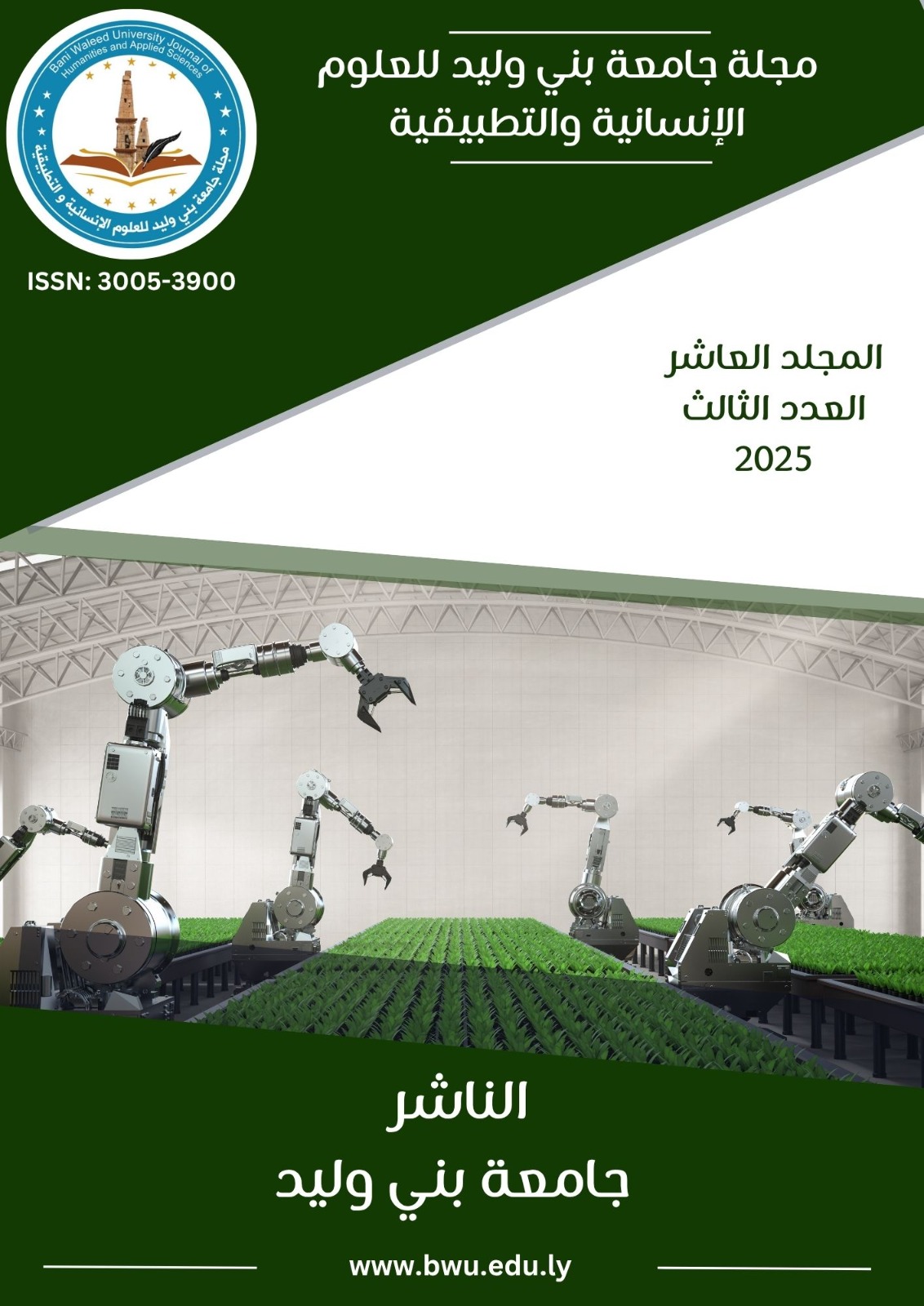A study of the prevalence of bacteria causing meningitis in newborns with neural tube defects at Ali Omar Askar Hospital
DOI:
https://doi.org/10.58916/jhas.v10i3.858Keywords:
Bacteria, inflammation, meningitis, neonatal, neural tube defectAbstract
Bacterial meningitis is a life-threateing condition that affects infants and remains a major contributor neonatal morbidity and mortality,particularly aamong newborns with neural tube defects (NTDs). These congenital anomalies increase the susceptibility of the central nevous system to severe infections due to compromised structural integrity.
Objective: this study aims to investigate the prevalence and type of bacterial pathogens causing meningitis in neonates with NTDs admitted to Ali Omer Askar Hospital, Libya.
Method: A total of 33 cerebrospinal fluid (CSF) samples were collected from neonates diagnosed with NDTs over a nine-month period. Samples underwent Gram staining and were cultured on various selective media (Blood Agar, Chocolate Agar, McConkey Agar). Additional samples were analyzed from blood and wound swabs to identify bacterial pathogens.
Results: Among the cases,72% tested positive for bacterial meningitis, with a higher prevalence in females (58.3%). Hydrocephaluse was the most common NDT observed (40%), while ruptured meningomyelocele cases showed the highest infection rates. Acinetobacter sp was the most frequently isolated bacterium (24.4%), followed by Staphylococcus hemolyticus (15.1%).
Conclusion: Neonates with NDTs, especially those with ruptured meningomyelocele, exhibit a significantly elevated risk of bacterial meningitis. The findings underscore the importance of early diagnosis, targeted antibiotic therapy, and heightened clinical attention for this vulnerable.
Downloads
References
Al-Farsi, Y.M., Al-Rawahi,A. H., Al-Rawahi,B., Al-Farsi,O.,& Al-Maniri,A.(2010). Neonatal meningitis in Oman: A10-yeas review. Journal of Tropical Pediatrics, 56(3), 174-179.
Berry R.J, Li, Z, Erickson, J.D, et al. (1999). Preventing neural-tube defects with Folic acid in Chin. New England journal of medicine, 34(20),1485-1490. https//doi.org/10.1056/NEJM199911113412001
Brender, J.D, Carmichael, L, Preece M.J, Latimer, G.C, & Suarez, L.(1989). Epidemiology of anencephaly in Texas, 1981-1986. Texas Medicine,85(5),33-35.
Cragan ,J.D, Roberts H.E, Edmonds, L,D, et al.(1995). Surveillance for anencephaly and spina bifida and the impact of prenatal diagnosis— United States, 1985–1994. MMWR CDC Surveillance Summary, 44(SS-4):1-13.
Gaschignard, J., Levy, C., Romain, O,et al. (2011). Neonatal bacterial meningitis: 444 cases in 7 years. Pediatric Infectious Disease J0urnal, 30(3),, 212–217.
Grandgirard, D. & Leib, S. L. (2010). Meningitis in neonates: from bench to bedside. Clinicls Perinatology, 37 (3), 655–676.
Khan, G.M., & Sankh,S.K. (2003). Delayed surgical intervention and its association with meningitis in neural tube defect patients. Journal of pediatric Neurosciences, 18 (1),45-49.
Kim, K. S. (2003). Pathogenesis of bacterial meningitis: from bacteraemia to neuronal injury. Nature Reviews Neuroscience, 4,(5), 376–385.
Lorenzo, D., et al. (1999). Features of neural-tube development and neural-tube defects. [Figure]. In: Student Consult.
Mosby,Inc. (2005). Myelomeningocele and Meningocele in newborns [Photographs]. In Student Consult.© Mosby, Inc.
Adel, M., Abouzkhar, F., Madi, H., & Salem, N. (2025). Isolation, Identification of Candida Species in Diarrhea Patients: From Zintan City, Libya. Bani Waleed University Journal of Humanities and Applied Sciences, 10(2), 138-146.
Muller, F, O'Rahilly, R.(1996). Human embryology and teratology.( 2nd ed). Wiley-Liss.
Murszko,K. M., Drake, J.M.,& RUTKA, J. T. (2011). Bacterial meningitis in infants with myelomeningocele. Journal of Neursurgery:Pediatrics,8(2), 110- 115.
Rosenstein, N. E., Perkins, B. A., Stephens, D,S., Popovic, T., & Hughes,J.M.
(2001). Meningococcal disease. New England Journal of Medicine,344(18), 1378-1388. https://doi.org/10.1056/NEJM200105033441807
Shibuya, K, & Murray, C.J.L.(1998). Congenital anomalies. In C.J.L. Murray & A.D. Lopez,( Eds). Health dimensions of sex and reproduction: the global burden of sexually transmitted diseases, HIV, maternal conditions, perinatal disorders, and congenital anomalies.( Vol. 3, PP. 455-512). Harvard University press.
Moftah, A. M., & Redwan, M. M. (2025). HERBAL REMEDIES: THE SCIENCE AND TRADITION BEHIND MEDICINAL PLANTS. Bani Waleed University Journal of Humanities and Applied Sciences, 10(2), 19-26.
Synnott, M. B., Morse, D.L., & Hall, S.M. (1994). Neonatal meningitis in England and Wales: a review of routine national data. Archives of Disease in Childhood, 71(,1) 75-80. https://doi.org/10.1136/adc.71.1.75
World Health Organization.(1988). Control of epidemic meningococcal disease: WHO practical guidelines (2nd ed.). Geneva:WHO.
Wynbrandt, J., & Ludman, M.D.(1991). The encyclopedia of genetic disorders and birth defects. Facts On File.









